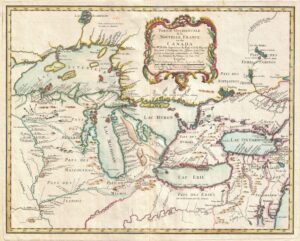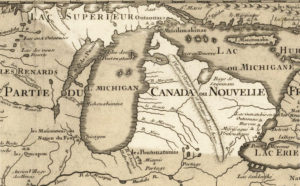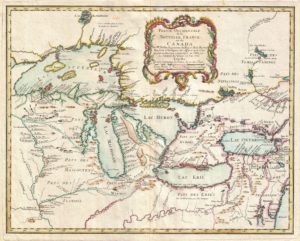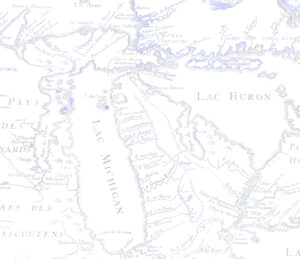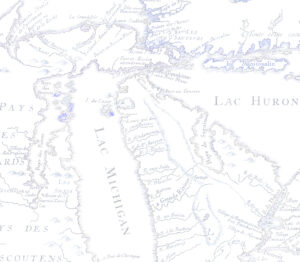by A. Trae McMaken
The Michigan fiddling tradition begins with the French fur trade and Native American traditions and continues through influence from the British Isles, Africa, New England, Central and Eastern Europe, Scandinavia, Finland, the American South, Western Swing, Mexico, and probably many other locales. Some of these influences have been more resounding than others. Folklorists and enthusiasts long focused on concepts of isolation, purity, and authenticity in the study of American folklife, but developments in the Michigan tradition have been closely related to industry, commerce, and migration in Michigan and the Great Lakes region. Folklorists looking for a “preserved” and “authentic” example of some kind of quintessential American folk style were not prone to look at Michigan and many other midwestern locales. Some preferred to focus on Appalachia, for instance, where it was erroneously believed isolation had kept the tradition “Anglo-Saxon.”
Michigan’s fiddle traditions are so fascinating in part because of creolization closely tied to the larger social experiences of the region. Because this takes place in a multi-ethnic context along an international border, the study of Michigan fiddling can provide an opportunity to explore the nature and meaning of much of Michigan’s cultural experience in a way that can influence some of our social beliefs about regional and national identity.
When discussing “Michigan fiddle style,” one might refer to fiddlers playing with an accent. This accent is rarely well defined but is generally associated with regional repertoire, a high emphasis on traditional regional perceptions of danceability, melodic variations, and sparse ornamentation relative to many contemporary North American fiddle styles. The definition above cannot adequately account for the complexity of fiddling in Michigan, a state that has been and continues to be a region of crossroads and creolizations for cultural groups and musical traditions. With some exception for the Native American population, Michigan is a place of migration. That said, some local styles might claim to be native to Michigan and the proprietors of Michigan style while others, often more northerly or fringe, or more recent immigrant groups, are seen as “ethnic” and therefore not properly Michigander. This nativist perspective is perhaps connected to certain “Yankee” or New England dominated settlement in southern Michigan in the statehood era, a settlement that was influential but not the advent of fiddling in a state that had seen fiddling with both the French and British occupiers. “Yankee” (i.e., New England) fiddling was one more vein of tradition.
The great industrial migrations of the 20th century brought southern and Appalachian fiddlers to the Detroit area. The Irish fiddling community continues on in Detroit, and there is an ever-growing pan-regional fiddle community, driven by the internet, that de-emphasizes regional identity and streams of repertoire.
Fiddling is generally learned through oral methods, though sheet music has played a part for many fiddlers. The venues for the music consist of house parties, dances, jams, personal practice, jamborees, festivals, concerts, bars, etc. Today, the community of Michigan fiddling exists within the Original Michigan Fiddlers Association, The Michigan Fiddlers Association, dulcimer clubs, unaffiliated jams and jamborees, festivals, and individual musicians who tend to play music together. Sub-regional communities in Michigan have tended to fade into a state-wide or at least Peninsula-wide sense of community, in part due to a shrinking population of practitioners. This website seeks to celebrate and document the varied history of fiddle music in Michigan.

